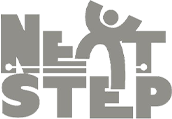Next Step Lead Dr Fiona Pender talks to Special Children magazine about the benefits of the Next Step approach
*Article appeared in March/April 2017 edition
The Cards
The first element of Next Step is a set of 12 ‘life cards’, with headings such as Home, School, Friends, Mood, and Safe, which are used alongside three traffic light cards (red, amber and green). The young person sorts these according to how they feel things are going for them at that time.
For example, they might place Home under a red traffic light if this is an area of concern for them. ‘Even without eye contact or words, you can quickly establish what a young person is feeling about their current situation,’ explains Fiona Pender, clinical director of Wirral CAMHS. ‘The life cards are not about symptoms, they’re about areas of a young person’s life. And so they can sometimes elicit what’s really bothering them in a way that a more symptom focused conversation may not.’
After this initial activity, the young person is prompted to select a card representing one area of their life that they would like to be different. Using an approach from solution-focused therapy, the adult then uses cards numbered 1-10 to help them set a goal to help bring about that change. The adult asks: ‘If we could make this area of your life as good as it could be – a 10 – what would that look like?’ Once this goal is established, the young person sets a baseline by identifying where on the scale they would place the area for change.
Finally, ‘steps’ cards (with actions such as Let Go, Relax, Stop or Choice) are used to prompt the young person to consider what they might do to move their baseline score just one step up the scale towards their goal. The young person decides on up to three actions.
The Story
‘Sometimes setting goals can feel a bit daunting,’ says Dr Pender. ‘This approach breaks the process down and makes it feel more manageable. But the whole point is that young people are choosing what they think they need to do, as opposed to having an adult telling them:
“I really think you need to go to bed earlier” or “You need to stop going out with those friends.” When you make your own choices, you’re more likely to follow them through.’
A picture of the relevant ‘steps’ cards, taken on the young person’s phone or emailed to them, provides a simple visual record of the choices they have made as they try to put them into practice.
‘They go away with a sense of being validated and listened to, not being told they’re wrong or criticised in any way,’ observes Dr Pender. ‘It’s about supporting them to take that next step towards their personal goals, and that makes them feel more positive and confident.’
A system where everyone works together Wirral CAMHS hopes that Next Step will provide an important bridge between CAMHS and the rest of the children’s workforce.
‘Implementing THRIVE means creating a more cohesive system, and Next Step works particularly well for both the Thriving and Getting Advice areas of the THRIVE model,’ says Dr Pender. ‘Some young people want to talk about their emotional wellbeing, but they don’t always need or want a trained mental health worker for that. They want someone they know and trust.
‘We did some research in Wirral, and one of the things young people told us was: “If we’ve chosen an adult to talk to, please don’t pass us on.” They’ll have thought long and hard about who they’re going to approach, and if that person says they can’t help, that’s the end of that and they close down. We need to respect their choices, but we also need to support the people who are supporting them.’
‘Adults in schools or social care sometimes feel a bit hesitant about discussing mental health with the young people they work with,’ she continues.
‘The Next Step cards are intended to be accessible to people who aren’t trained therapists by scaffolding those conversations, so they feel more confident in helping young people to talk about their emotional wellbeing, and then to set their own goals and move towards achieving them.’
Wirral has had an almost universally positive response to the resource. The cards (also available as an app) and associated training are now available commercially. Schools that have received the training have reported that using the cards to initiate conversations has sometimes removed the need for referrals to CAMHS.
‘A lot of CAMHS have increased their threshold, and children have to be quite severely in need before they get help,’ says Dr Pender. ‘That means there’s a significant gap that has to be filled. These children may not need full-on therapy for six months or whatever, but they need more than they are getting now. That’s why we’re focusing on getting the cards used in as many schools and community settings as possible.’
